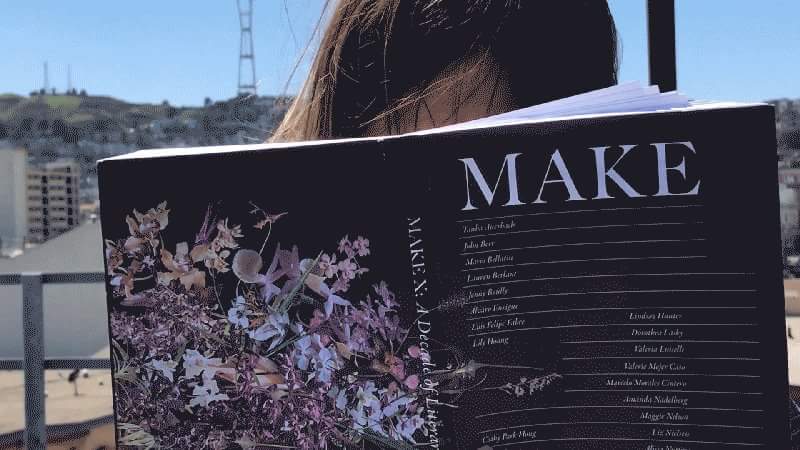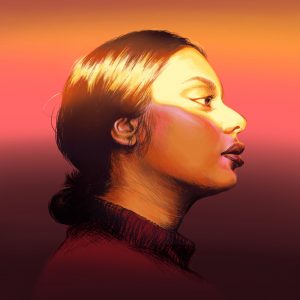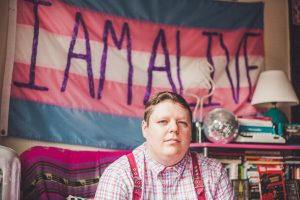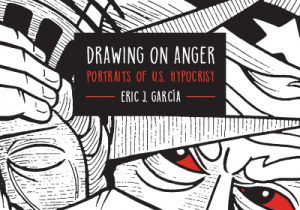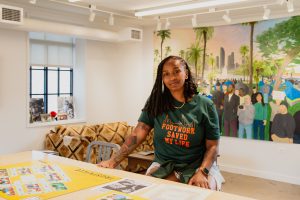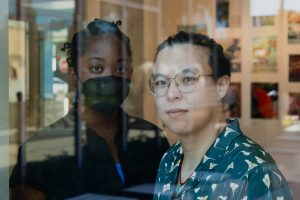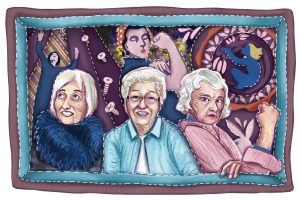In preparation for Sixty’s Chicago Archives + Artists Festival (May 19 – 21st) and in the hopes of encouraging artists to come out and get archived, Sarah Dodson from MAKE Literary Magazine was kind enough to put together some ephemera to start a file for MAKE at the Harold Washington Library’s Chicago Artist Files. MAKE recently finished the process of sorting through their own history and selecting which pieces they felt were most representative of their work to be included in their anthology MAKE X: A Decade of Literary Art, so she felt like the perfect person to ask. We sat down and chatted about the history of MAKE, the role visual art has played in the publication, and the similarities between editing the anthology MAKE X and choosing ephemera to be archived. MAKE will be hosting a book release party and BarBookQue for MAKE X at the Hideout on May 20th from 2 to 6 PM.
If you are interested in getting your work archived, bring your materials to us at the Chicago Archives + Artists Festival and stick around for our amazing line up of panels!
Jennifer Patiño Cervantes: So the first thing I wanted to ask you is if you had heard about the Chicago Artist Files at Harold Washington Library before?
Sarah Dodson: No, I hadn’t.
JPC: They’re an archive of artists in Chicago that goes back more than 100 years. So they have just been keeping this all together. One of the things that Sixty does is it tries to get artists to get in there and save their stuff and think about their legacy because we’re doing all this work right now and then what happens to it? How does it get passed down? And we’ve been helping Harold Washington Library collect more artist files since 2010 now.
So since you hadn’t heard about it, what made you say yes to getting a file started?
SD: You.
JPC: Me?
SD: Yeah, that was basically it and thinking back, like why didn’t I look up and see what that was at the time? I think I was just, you know, I have a lot of faith in the different projects that you’re working on and that’s really enough for me to say yes.
JPC: Aww, yay! Awesome. So let’s see, how long has MAKE been around total?
SD: So the first issue of the magazine was released in the summer of 2005 and then MAKE Literary Productions was formed in 2009. Whoa! Yeah, so that summer we had the magazine in our hands and the first release party. So there had been a lot of developments preceding that. There was back in 2004, the first fundraiser, you know, and then we put all the contents together and we published.
JPC: And what made you want to start putting a literary magazine together?
SD: At the time we were very young and we, I say that to include Mike Zapata, Ramsin Canon, and a bunch of other people also sort of coming and going, wanted to create a magazine because we liked magazines. We were all interested in literature and art and where they sort of come together in actual physical space.
Then we also saw, sort of being new to Chicago, I having just moved from Iowa City and having been in Chicago for a little while. Mike and Ramsin were both from Chicago but hadn’t really lived there as adults. Well, Ramsin yes. He was still young enough to be on the verge of adulthood. (laughs) But we sort of saw that there were a lot of different literary communities in Chicago and a lot of great writing coming out of those but there wasn’t a lot of interaction between the different communities. So we thought, well why don’t we put a publication together that really showcases Chicago so that it’s not sort of in the shadow of other cities that are really considered publishing cities – that would really just be New York. But we thought there was so much happening and we wanted to highlight it.
JPC: Have events been a part of what MAKE does since the beginning, and have you found that that builds community between the people that you wanted to build community with originally?
SD: Yeah, it’s actually…each issue has a corresponding release event, release party and within that we try to combine another art form so that different communities from different areas of the arts are coming together. But then in addition to that we did feel like there were people all across Chicago coming together for these events. Because there would be more established authors who were presenting or reading along with people who were just being published for the first time and maybe they wouldn’t have had a chance to interact before. So they would come to this event and we saw the events not just as the opportunity for writers to come together, people who may not, you know, their work is often solitary, they’re not necessarily getting the opportunity to meet other people unless they’re in a school or whatnot. But in addition we really wanted to invite and encourage people who are just interested in reading and in literature to be part of these events because we sort of saw this other thing happening, which was, once people are out of school and out in the world, they’re sort of can be an unknown. Like how do you maintain the interest that you had when it was easy to talk about literature in class or with your friends when you go to a new city or you’re taking a new job? It’s like how do you learn about new writing that’s happening and new art forms and how can you appreciate these things outside of your favorite chair?
JPC: So visual art is also a big part of MAKE, right? How did that get started or what made you decide to include visual art?
SD: It was definitely there from the beginning. I mean it sort of has grown in the number of pages and the degree to which it is included in the actual magazine. But it was always very significant. We always thought that there was a strong relationship between literature and visual art and that they could inform each other in different ways. And could see how those two communities also don’t connect as often as you would think they would. And so again we wanted to bring things together, bring artists and writers and appreciators of both together to sort of show one and the other that it’s okay if you don’t understand this super well, you can still like it. When you’re talking about anything literary, poetry especially. Same things goes for a lot of contemporary art. Maybe we thought that increasing the, not understanding, but the appreciation across the board would be advantageous for both art forms.
JPC: What do you think MAKE has contributed to the Chicago art and literary scene? What do you think has been the main contribution?
SD: That’s a good question. I think that it’s hard to see it from the inside. I guess what I would hope that what we had contributed would be opportunity for people to be published, and to take pride in the things that are happening in their city. Obviously MAKE is not Chicago-centric but most of the people who come together to make it are in Chicago. And hopefully that collaboration with different people in Chicago and outside of Chicago lends itself to other people who might want to do something similar to show them that it is possible – if you don’t like money and want to spend a lot of your free time on certain projects.
JPC: What was the process of putting the anthology MAKE X together like?
SD: It took a little longer than we thought, of course. And it was much more complicated than we thought because there were, you know, it was hard to decide what we were doing. We knew that we didn’t want to do a best-of because trying to choose between pieces was too much and there’s still a lot of stuff when I think about it that I’m like, “oh, that’s not in there?” It was a process, asking all the editors “what do you think helps to express the collective voice of MAKE?” Without actually really defining what that is, sort of leaving it open to just looking at a series of content and thinking are we missing anything, are we not including something? Is there a tone that is absent? Is there a style that reflected a certain time within the magazine and also within, it’s only been ten years, but I feel like there’s probably been different movements that we could within the literary and visual arts communities. Although the visual art is new [in MAKE X] so that’s something else. We asked everyone to start with a few pieces and build that up from there.
JPC: I remember when we talked about MAKE X last year, you mentioned that some of the visual artists you were including were giving new pieces for it. Having published their pieces before and now publishing new pieces were you able to see a big range of changes? Were you able to see how they had evolved?
SD: Yeah, actually. Some of the artists gave us new work that was also brilliant and sort of similar to what they were doing in the magazine previously. Of course some of them were printed years and years ago and some of them were more recent so there’s less change with those artists. There was an artist who gave us a series of really amazing and intricate drawings and then this time around it was a bunch of small sculptures that were photographed and that’s just an example. There were changes but the work was all still really good. And we thought that a writer’s practice could change a lot over the course of time but I think there’s much more potential for that with visual art. So we wanted to give everyone sort of an opportunity to update themselves and also just to have that new element within the book.
We also have just had changes with how the art is presented, with you know the format over the years so this was an opportunity to put it all in a similar design format.
JPC: So it was the design element that changed over time at MAKE for the visual art or how did that change?
SD: The design element changed for the actual magazine because different designers came in to do each issue and then once we decided we were actually just doing one issue a year, when we finally admitted to ourselves that that was all we had capacity for, then we started making that issue much more of a special print object and the focus on design was much heavier and there are many more design elements in the last few issues and the visual art portfolios are more substantial too. They take up more of the magazine. In previous issues we didn’t really have a budget for color printing so that really limited what we included and the artists that we included. We hadn’t really established the portfolios yet so everything looked a little different. Some of the art work was accompanying a story rather than being on its own.
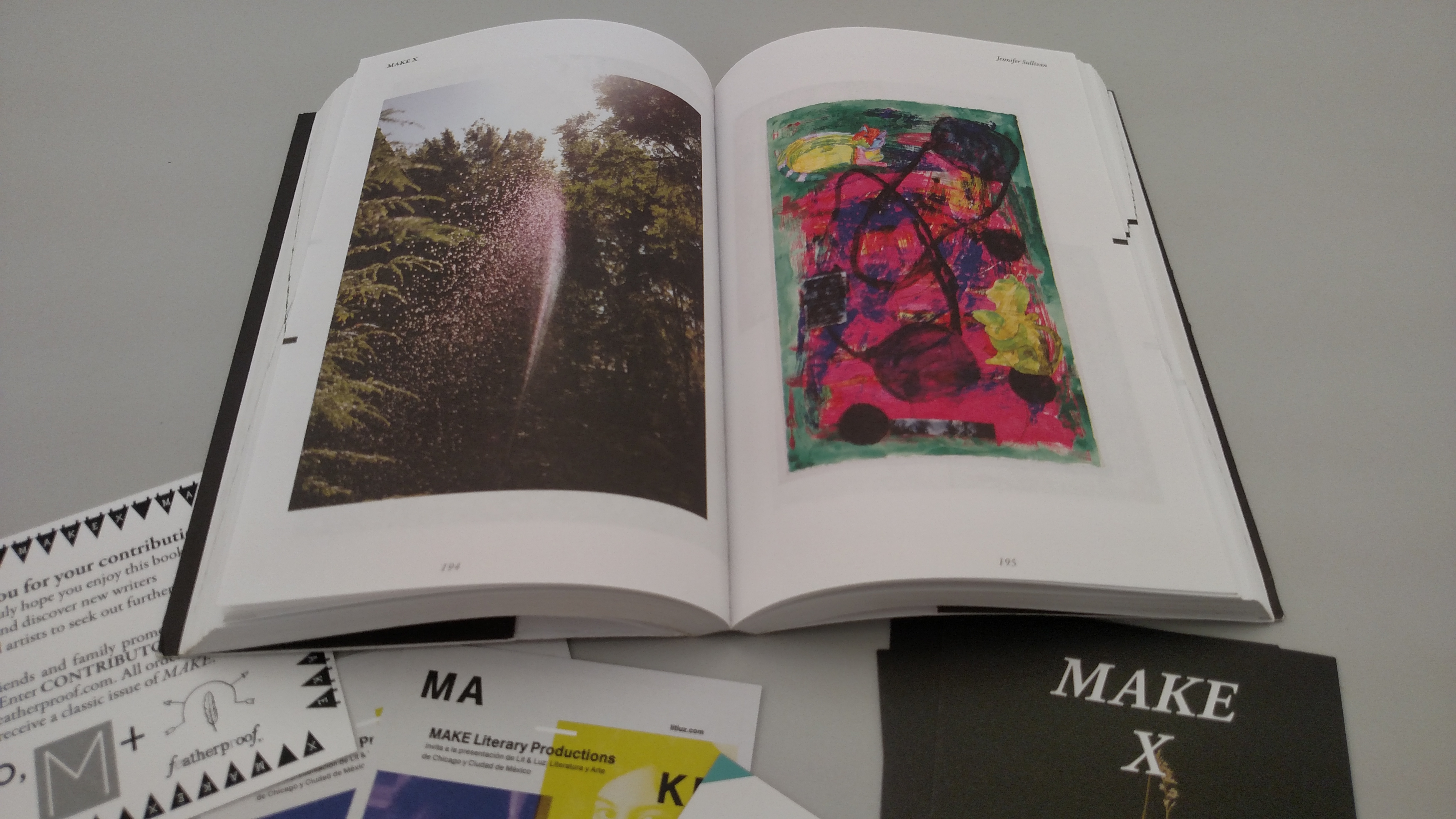
JPC: Since we’re putting a file together today for MAKE for the Chicago Artist File, do you see parallels for yourself between thinking about archiving and what you’re going to select to include in your file and what the process was like to edit MAKE X? Do you see parallels with archives and what you do with the magazine
SD: That’s a good question. I feel like when I think about things to put together for the file that are ephemera, I think about them as markers for specific events or even like a period of time and we did always like to have that visual element to go along with something in addition to the magazine or something for an event because it does allow us to go back and have that physical object for that place and time. And then I think some of the pieces in the magazine probably do the same thing because maybe they were… there were pieces that started the next issue because each issue has a theme and so maybe it jump started an issue. And that sort of became one of the literary markers for that issue and that time. And maybe made it more easily selectable for archiving purposes in MAKE X because it meant something to that particular issue of the magazine.
JPC: One of the other things I wanted to ask you about was about how MAKE publishes work that’s in English and Spanish as well through the Intercambio and the international location of the Lit & Luz Festival. So how did that come about? How did that first get started?
SD: It started with issue 12 of the magazine and I think it really got started with just sort of realizing how few books were translated and how little we in Chicago, hopefully less now so than before, but how little we are aware of literature that is happening in Mexico City, for example. There just weren’t a lot of books in translation and we sort of stopped to think about it and we were like that seems crazy. We’re not far away and we know there is a huge literary tradition. And also lots of books in the US are being translated from English and there’s not a lot of reciprocity. And with Chicago being so Spanish speaking, we just wanted to explore that more to see what a literary magazine could do in that regard and also for our personal benefit just to know more.
JPC: So what has that been like? Bringing that on as part of the focus?
SD: It’s been really great. We’ve had the good fortune to have two editors who are really in tune with different literary communities and not just in Mexico City but in Latin America and beyond. One of our editors, Brenda Lozano edits prose primarily for Intercambio and she is really looking at writers in Mexico City but also throughout Latin America. For this upcoming issue she is going to be inviting six female writers from six different Latin American countries, which is great because a lot of these writers are emerging – and even if they’re not, many of them have not been translated. So this will be an opportunity to introduce their work to a new audience. And just to keep us reminded of how much we don’t know about the literature outside of the US.
JPC: For the artist file, one of the requirements is to have done at minimum two events in the city. And you’ve done so many more than that. So thinking about that, what have been two of your favorite events? What have been two that you’ve enjoyed the most?
SD: This isn’t that far back, so I feel like it’s cheating, but I really liked the release for issue 14 Visual Culture. We did a fake television show with the comedian Adam Burke. It ended up being videotaped by CAN TV. We went all out and we had all the things that you would have on a TV show. Every guest was just, cooperative is not the right word – they all had a really great time which made everyone at the event and everyone putting on the event have a really good time too. It just felt like everything came together like it was supposed to, which isn’t always the case. But that happened. A lot of people came together to make that happen. And so there were a lot of different skill sets employed which was also nice and it felt like, I know we talk about, especially for Lit & Luz, we talk about the Live Magazine approach and it felt like that was really happening on stage.
JPC: That sounds like a really cool event, really fun.
SD: There’s video of it somewhere. I’ll say that the recent Lit & Luz also was really great. I felt like we had a really good team, everything came together. The artists had good experiences collaborating with each other. The final night, there were also different skills, different food and drinks, the works, it all really came together for something to give people this, to provide an opportunity to have an experience while seeing this new work being presented.
JPC: And for people who don’t know what Lit & Luz is, can give us a brief description?
SD: Lit & Luz is an annual festival of literature, language, and art featuring writers and visual artists from Chicago and Mexico City. In the fall in Chicago and in February in Mexico City, the writers and artists come together to present their work individually and collaborate on new work that is presented in the event finale.
JPC: And can you tell me a little bit about the release for MAKE X?
SD: Sure, so on Saturday May 20th at the Hideout from 2 to 6 PM we are having a barbecue to celebrate the release. The barbecue starts at 2, well the BarBookQue, which doesn’t make any sense (laughs), but it felt like that should happen. So the Hideout has a nice patio outside and we are going to be serving food there all afternoon. The event is free and the barbecue is $10 a plate and kids are welcome also. At 3 PM, Adam Burke returns to host another MAKE event. Contributors and friends of MAKE will talk about the book. Some contributors will talk about their work in the book and what they are doing currently. There are videos from contributors from Mexico City as well as contributors from Chicago talking about some of their favorite pieces in the book, so it should be a lot of fun and a lot of anecdotes, slideshows, videos, who knows? Probably a lot of embarrassing moments being shared, but you know an introduction to the book, I think in the best way.
And then following that, Marvin Tate will perform with the guitarist Bill McKay and what we were trying to do with the event is bring people from the book as well as people from MAKE’s past, so Marvin Tate was at, I believe the first fundraiser for the book and the first release party and he’s been involved in different degrees with the publication ever since. And Adam Burke has hosted quite a few events for the magazine and lots of special guests.
JPC: And if people can’t make the event, where can they check out a copy of MAKE X?
SD: They can get it at their local bookstore or they can get it directly from the Featherproof website or they can get it through the online shop on the MAKE website.
Do you enjoy what we do at Sixty? Please help keep us going by making a contribution today. No amount is too small.
Jennifer Patiño Cervantes was born on the Southwest Side of Chicago and her family is from Mexico. She is a freelance writer, poet, essayist, and Director of Development for Sixty Inches From Center. She graduated from Columbia College with a degree in Art History and double minors in Poetry and Latino/Hispanic Studies. She is a lover of Chicago’s Visual Arts and Literary communities and lives to explore the links between them.
